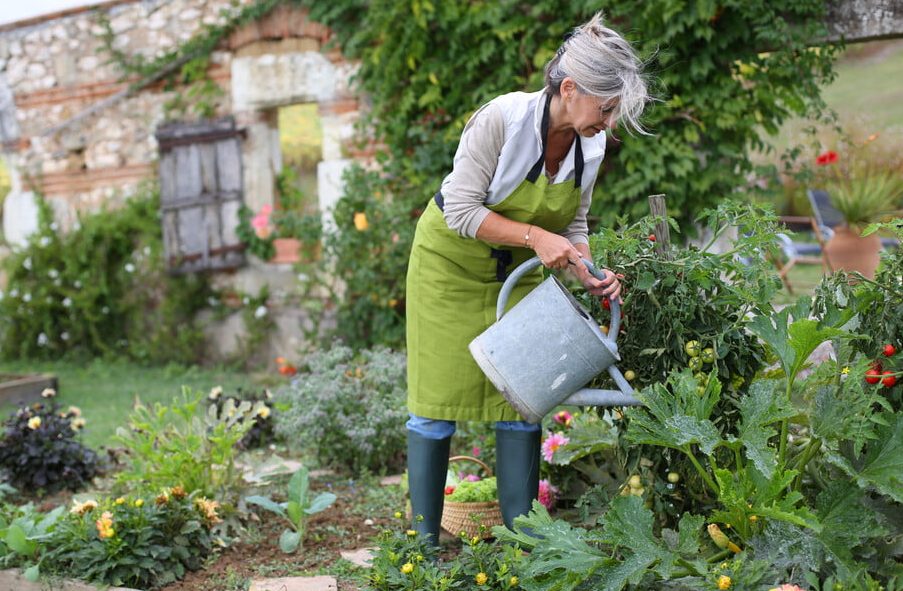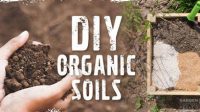goads.id – Forget manicured lawns and sterile rows of vegetables – let’s paint your backyard with the vibrant brushstrokes of eco-gardening! Think lush emerald tapestries woven with fragrant roses, buzzing with happy bees, and alive with the joyous chorus of chirping birds. This isn’t some unattainable utopia; it’s the natural harmony that unfolds when we ditch the environmental thumbscrews and embrace the wisdom of Mother Earth.
But hold on, eco-gardening isn’t just about crunchy granola and Birkenstocks. It’s about a fundamental shift in our relationship with nature. It’s about understanding that your garden isn’t an isolated battlefield, but a vital knot in the web of life, a playground for pollinators, a haven for biodiversity. So, are you ready to swap the plastic trowel for a green thumb and become an eco-gardening maestro?
Why Go Green? Beyond Band-Aids for Your Planet
Chemical fertilizers might seem like magic pixie dust, transforming your wilting seedlings into prize-winning pumpkins. But think of them like sugary sodas – a fleeting buzz followed by a crash. They might give your plants a nitrogen jolt, but they leave your soil gasping for air, poisoned and dependent. Imagine pouring syrup on a wilting lily; it might perk up for a moment, but its roots, its true source of strength, remain neglected.
Healthy soil is a living symphony, teeming with tiny maestros like microbes, fungi, and millipedes. They break down organic matter, releasing vital nutrients and creating a complex dance of minerals that nourishes your plants from the roots up. Chemical fertilizers disrupt this delicate balance, silencing the natural conductors and replacing them with artificial notes. The result? Weak, dependent plants prone to disease and pests, while the soil itself becomes increasingly lifeless, a sad, silent wasteland.
Eco-Gardening’s Grand Opera: Técnicas for a Thriving, Sustainable Paradise
So, how do we turn up the volume on this natural symphony? It’s time to swap the chemical crutches for the conductor’s baton and orchestrate a masterpiece of life in your own backyard! Here are some tried-and-true eco-friendly methods to enrich your soil and unleash its hidden potential:
Compost King: Nature’s Recycler and Nutrient Powerhouse
Compost, the glorious black gold of the gardening world, is the undisputed king of eco-gardening. Think of it as nature’s recycling bin, where kitchen scraps, fallen leaves, and yard trimmings transform into a potent elixir for your beloved plants. But creating this magic potion requires mastering the art of the “brown and green.” Your compost pile needs a delicate balance: carbon-rich “browns” like shredded paper, twigs, and dead leaves provide structure and aeration, while nitrogen-rich “greens” like kitchen scraps, grass clippings, and coffee grounds fuel the decomposition process.
As this motley crew of organic matter breaks down, a symphony of microbial activity fills the air. Fungi weave their mycelial threads, connecting plants to a vast nutrient network, while bacteria tirelessly decompose, releasing a treasure trove of minerals and nutrients. The result? A rich, earthy concoction teeming with life, ready to revitalize your soil and send your plants into overdrive.
Cover Crop Cavalry: Nature’s Green Manure and Erosion Fighter
Next, let’s call upon the cover crop cavalry, nature’s unsung heroes. These temporary residents blanket your soil after harvest, smothering weeds, preventing erosion, and adding a vital dose of nitrogen to the equation. Legumes like beans and peas are nitrogen champions, fixing atmospheric nitrogen into the soil, leaving behind a bounty for future crops. Other cover crops like buckwheat and rye suppress weeds, improve soil structure, and attract beneficial insects, creating a vibrant oasis for your garden’s microbiome.
Mulch Mayhem: Suppressing Weeds and Retaining Moisture
Now, let’s layer on the final act of this natural play – the mulch mayhem! Wood chips, straw, or even shredded leaves form a protective blanket on your soil’s surface, suppressing weeds, retaining precious moisture, and regulating soil temperature. Think of it as a cozy sweater for your earth, keeping it warm in winter and cool in summer. Mulch also slows down erosion, allowing precious topsoil to stay put and nourish your plants, not nourish a muddy ditch.
Water Wise Wizardry: Conserving the Liquid Gold
Water, the lifeblood of your garden, needs to be treated with respect, not wasted. Ditch the wasteful sprinklers and embrace water-saving techniques like drip irrigation systems that deliver precious drops directly to thirsty roots. Consider rainwater harvesting, storing the life-giving liquid from your roof in barrels to nourish your plants during dry spells. Remember, mindful watering isn’t just about saving money; it’s about honoring the precious resource that sustains all life.
Pollinator Paradise: Building a Buzzing Symphony
Your garden isn’t just a green haven; it’s a bustling hotel for our buzzing friends – the pollinators. Plant a symphony of colorful blooms throughout the season, creating a floral feast for butterflies, bees, and hummingbirds. Choose native plants that attract local pollinators, ensuring the continuation of this vital dance of life. Let your garden become a vibrant stage where blossoms sway to the buzzing melody of bees, a testament to the interconnectedness of your eco-paradise.
Embrace the Wild Side: Letting Nature Lead the Way
Forget the manicured lawn, the rigid rows of vegetables – sometimes the best way to achieve eco-gardening glory is to simply let nature take the lead. Allow a corner of your garden to become a wildflower haven, a refuge for native insects and birds. Create a mini-pond, providing a vital oasis for dragonflies, frogs, and a plethora of other water-loving creatures. Remember, a healthy garden isn’t just about picture-perfect rows; it’s about biodiversity, about creating a microcosm of life that thrives in harmony with nature’s rhythms.
Table: Common Eco-Gardening Techniques and Their Benefits
| Technique | Key Benefits | Best For |
|---|---|---|
| Compost | Rich source of nutrients, improves soil structure, retains moisture | All plants |
| Cover Crops | Adds nitrogen, suppresses weeds, prevents erosion | Fallow periods, before planting next season’s crops |
| Mulch | Suppresses weeds, retains moisture, regulates soil temperature | All plants |
| Biochar | Retains nutrients, improves soil structure, sequesters carbon | All plants, especially in sandy or clay soils |
| Water Wise Techniques | Conserves water, promotes healthy root growth | All plants, especially in arid climates |
| Pollinator-Friendly Plants | Attracts pollinators, increases biodiversity | Flowering plants, herbs |
| Wildflower Areas | Attracts beneficial insects, provides habitat for wildlife | Any corner of your garden |
Beyond the Garden Gates: Eco-Gardening’s Ripple Effect
Remember, your eco-gardening journey doesn’t end at the edge of your fence. Let the ripples of your green revolution flow out into the community! Share your knowledge, teach others about the wonders of composting and water conservation. Organize seed swaps, local plant markets, or neighborhood clean-up days. Every seed sown, every weed pulled with bare hands, is a contribution to a greener, more vibrant future.







